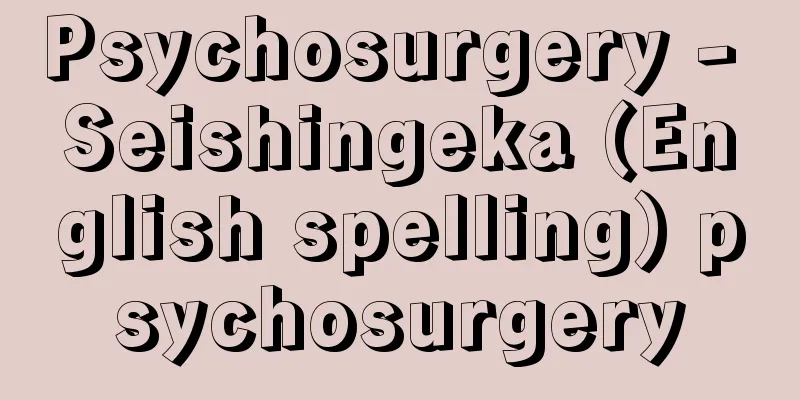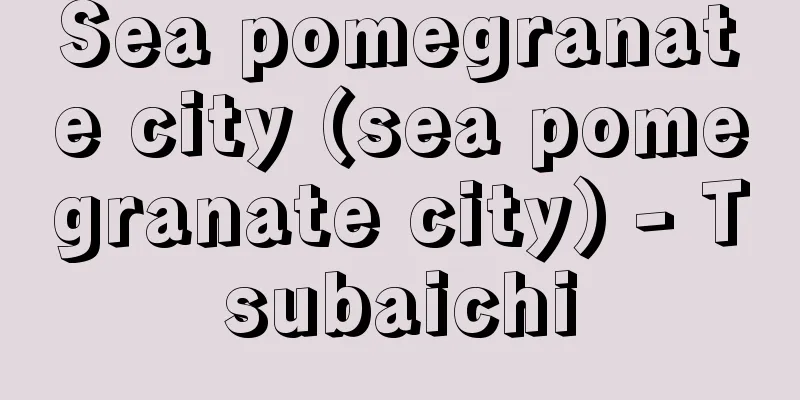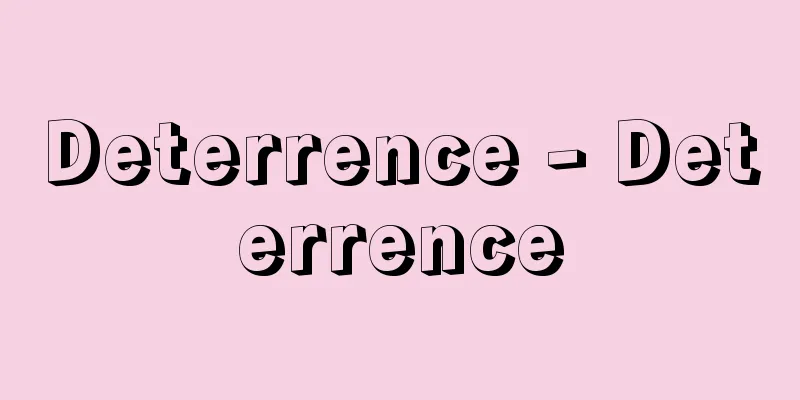Psychosurgery - Seishingeka (English spelling) psychosurgery

|
Psychosurgery is a brain surgery performed to restore normal mental states that have been distorted and fixed by illness, i.e. disorders of behavior, thoughts, emotions, etc. It involves cutting nerve fibers in the brain and resecting, destroying, or stimulating minute parts. Similar procedures are also performed in neurosurgery to relieve stubborn pain. Psychosurgery encompasses the entire range of therapeutic and research approaches using surgical means to elucidate the complex relationship between the anatomy and physiology of the brain and abnormal human behavior. In 1935, Portuguese neurologist Egas Moniz invented bilateral prefrontal leucotomy based on the hypothesis that mental disorders are caused by abnormal synaptic fiber connections in nerve cells in the frontal lobe, and named the field of brain surgery targeting psychiatric symptoms psychosurgery. The following year, American neurologists W. Freeman (1895-1972) and J.W. Watts announced prefrontal lobotomy as an improved surgical technique, sparking a boom in lobotomy (frontal lobectomy) around the world. In 1949, Moniz was awarded the Nobel Prize in Physiology or Medicine as its founder, but it was often used as a last resort for cases of personality destruction caused by schizophrenia (psychiatric schizophrenia), and problems such as ineffectiveness, relapse, and postoperative personality disorders led to attention being paid to improving the surgical technique and selecting appropriate cases. Since then, it has become possible to perform localized surgery using stereotactic brain surgery, targeting areas related to the limbic system, which is closely related to emotional regulation (medial orbital brain, anterior cingulate gyrus, thalamus, hypothalamus, amygdala, etc.). In the future, with the development of computed tomography (CT), it is expected that even more accurate methods will be developed that do not cause personality disorders. In the 1970s, there was a movement against psychosurgery in the United States, and a similar situation continues in Japan, but in 1977, the United States published the "Committee Report and Recommendations on Psychosurgery," which concluded that psychosurgery is effective (78% effectiveness rate) if the selection of indications is taken into consideration. Indications include severe depression, as well as periodic catatonia, recurrent dreamlike and confusional states, atypical endogenous psychoses such as schizoaffective and paraphrenic disorders, various psychiatric symptoms of epilepsy, intolerable pain syndromes due to various organic diseases, and psychosomatic conditions such as ulcerative colitis and anorexia nervosa that are indications for intestinal resection. [Tadao Hirose] "Psychosurgery" by Sadao Hirose (included in "Psychiatry Books, Volume 1" edited by Naotake Shinfuku et al., 1980, Kanehara Publishing) Source: Shogakukan Encyclopedia Nipponica About Encyclopedia Nipponica Information | Legend |
|
病気によってゆがめられ変形固着した病的な精神状態、すなわち行動、思考内容、情動などの障害を正常に戻すことを目的として行われる脳手術療法をいい、脳の神経線維を切ったり、微小部分を切除、破壊、刺激する手技である。同様の処置は頑固な疼痛(とうつう)の救済法として脳神経外科的にも行われる。精神外科には、脳の解剖・生理と人間の異常行動との複雑な関係を解明する目的で行われる外科的手段による治療的・研究的アプローチの全領域が包含される。 1935年ポルトガルの神経学者エガス・モーニスは、精神障害が前頭葉内の神経細胞に異常なシナプス結合線維群を生ずるためにおこるという仮説に基づいて両側前部前頭葉白質切截(せっさい)術prefrontal leucotomyを考案し、精神症状を対象とする脳手術の分野を精神外科と命名した。翌年、アメリカの神経学者フリーマンW.Freeman(1895―1972)およびウォッツJ.W.Wattsはこの改良術式として前部前頭葉ロボトミーprefrontal lobotomyを発表し、世界各国にロボトミー(前頭葉切截術)のブームを引き起こした。49年には、その創始者としてモーニスにノーベル医学生理学賞が授与されたが、統合失調症(精神分裂病)の人格荒廃例に対する最後手段として使われる場合が多く、しかも無効・再発、術後の人格障害などが問題となり、術式の改良、適応症例の選択に留意されるようになった。その後、情動の調整に密接な関係のある大脳辺縁系に関連した部位(眼窩(がんか)脳内側、前帯回、視床、視床下部、扁桃(へんとう)核など)を標的として定位脳手術術式を用いて限局性に手術ができるようになった。今後はコンピュータ断層撮影(CT)の開発により、さらに正確で、人格障害などを生じない方法が期待される。 1970年代にアメリカで精神外科に反対する動きがみられ、日本でも同様の状態が続いているが、アメリカでは1977年に「精神外科に関する委員会報告と勧告」が公表され、適応症の選択が配慮されれば精神外科治療は有効(有効率78%)であるという結論が出された。適応症としては、重症うつ病のほか、周期性緊張病、夢幻様状態や錯乱状態の反復、分裂・情動型、パラフレニーなどの非定型内因性精神病、てんかんの精神諸症状、いろいろな器質的疾患による耐えがたい疼痛症候群、腸切除の適応となるような潰瘍(かいよう)性大腸炎や神経性無食欲症などの心身症状態などがあげられる。 [廣瀬貞雄] 『廣瀬貞雄著『精神外科』(新福尚武他編『精神医学書 上巻』所収・1980・金原出版)』 出典 小学館 日本大百科全書(ニッポニカ)日本大百科全書(ニッポニカ)について 情報 | 凡例 |
<<: Phenomenology of Spirit (English: Phenomenology of Spirit)
>>: Psychiatric expert testimony
Recommend
Earth (myth) - Earth
...Balder (who shoots mistletoe at Baldr), Baal (...
Cancer, FW - Cancer
...It was in the latter half of the 19th century ...
Jorge Amado
1912‐2001 Brazilian novelist. Since making his deb...
Kii - Kii
〘Noun〙 (from "Laozi": "When you see...
Andreas Gryphius
German playwright and poet. Born in Silesia to a ...
Ullman, S.
…In this way, our focus of attention is thought t...
Epicycle
A small circle with a point moving on a single cir...
Gunu (English spelling)
… [Composition and Usage] Cuneiform characters ar...
Yoshimasa
A Tendai Buddhist monk in the early Heian period....
Pochteca (English spelling)
A group of privileged long-distance traders who em...
Esson, L.
...On the other hand, writers who were pioneers o...
simple fruit
…The most traditional and commonly used method is...
Heliodorus - Heliodorus (English spelling)
Date of birth and death unknown. Ancient Greek no...
River Opening - Kawabiraki
This event is held on rivers all over Japan from ...
Tomás de Zumárraga
A Spanish Dominican missionary. He came to Japan ...









